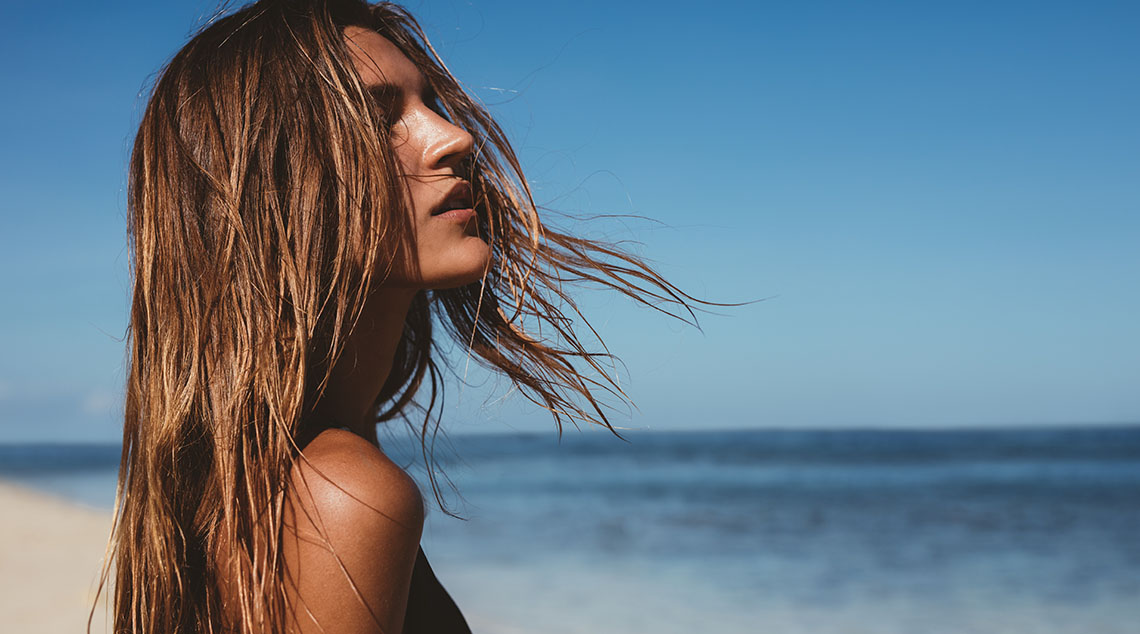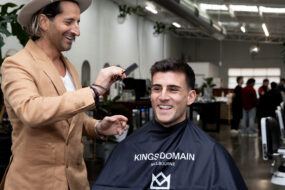How to protect your hair from sun damage
You slather your body in sunscreen, but it’s important to protect your hair from the sun’s harmful UV rays too.
By now, we all know it’s important to protect our skin from the sun’s damaging ultraviolet (UV) rays.
But how many of us know we should also be protecting our hair from sun damage?
Too much sun can damage our locks, making them dry and brittle.
What’s more, overexposure to the sun can increase the risk of skin cancer on the scalp.
View this post on Instagram
How summer can damage hair
In summer, hair damage is more common than at other times of the year because we tend to be outdoors more, exposed to the sun and elements, and more likely to be swimming in the sea and chlorinated pools, according to Posey Broomhall, the founder of Melbourne hair salon Harpo Hair.
“I also think we’re socially more active in summer, which means we’re styling our hair more and likely using heat tools more often in the process,” Posey notes.
The result? Frizzy, rough, dehydrated and faded hair.
How to protect your strands from sun damage
To reduce summer-induced sun damage to your hair, Posey recommends using a UV hair protectant when outdoors for extended periods.
“Swap to a sun range that will protect your hair from UV over summer thanks to filters that act similarly to sunscreen,” she says.
UV protectants are not to be confused with traditional heat protectants, which serve to protect the hair from heat tools rather than the sun’s rays.
Posey also has advice for those who like to swim, which may damage hair or change its colour.
“Apply a masque in the mid length and ends of your hair before you swim,” she says.
“This will create a protective film on the most sensitive parts.
“Every time you wet your hair, you are opening up the hair follicle, and without putting a masque or conditioner in to seal the hair strand back up, your hair will continue to open up to the elements.
“For this reason, my top advice is to rinse your hair after swimming, and use a masque or conditioner in your hair.”
If you are using heat tools to style your locks, apply a heat protector first to help limit heat damage.
If your hair is already damaged, aim to regularly use hydrating and protein hair masques and bonding treatments, which can help repair damaged hair follicles.
View this post on Instagram
What to know about skin cancer on the scalp
Squamous cell carcinoma is the most common type of skin cancer on the scalp, but basal cell carcinoma and melanoma can also develop.
These skin cancers are typically caused by too much exposure to the sun’s ultraviolet rays.
Hair helps protect your scalp from sun damage, but bald spots, thin hair or an exposed hair parting can be points of vulnerability.
Melanoma is the most dangerous type of skin cancer.
Melanomas on the scalp are rare, only accounting for about 2-5 per cent of melanoma cases, but as they are in a location on the body that is not very visible, they are typically found late.
An Australian study noted hair may help protect against scalp melanoma.
To protect yourself from skin cancer, including on the scalp, take measures such as wearing a broad-brimmed hat and seeking shade.
More about hair:
- Hot tips to heat proof your hair and make-up this summer
- Is a healthy scalp the key to your next great hair day?
- The best haircare products to show your locks some love
Written by Charlotte Brundrett.




